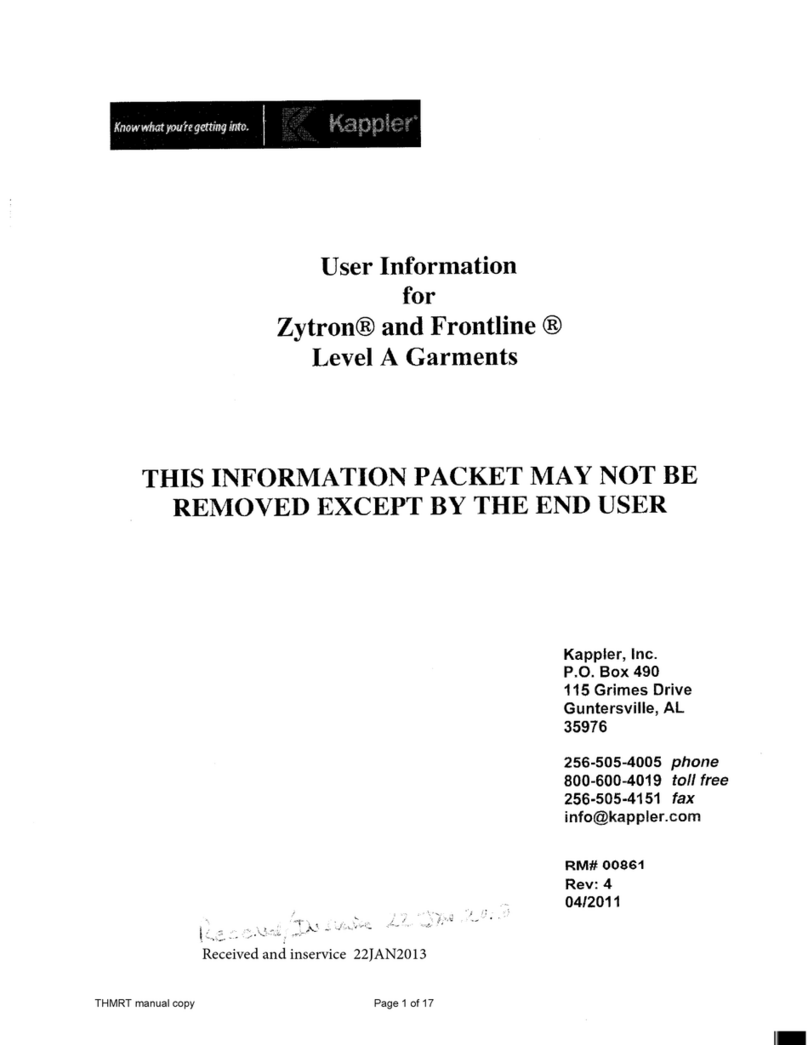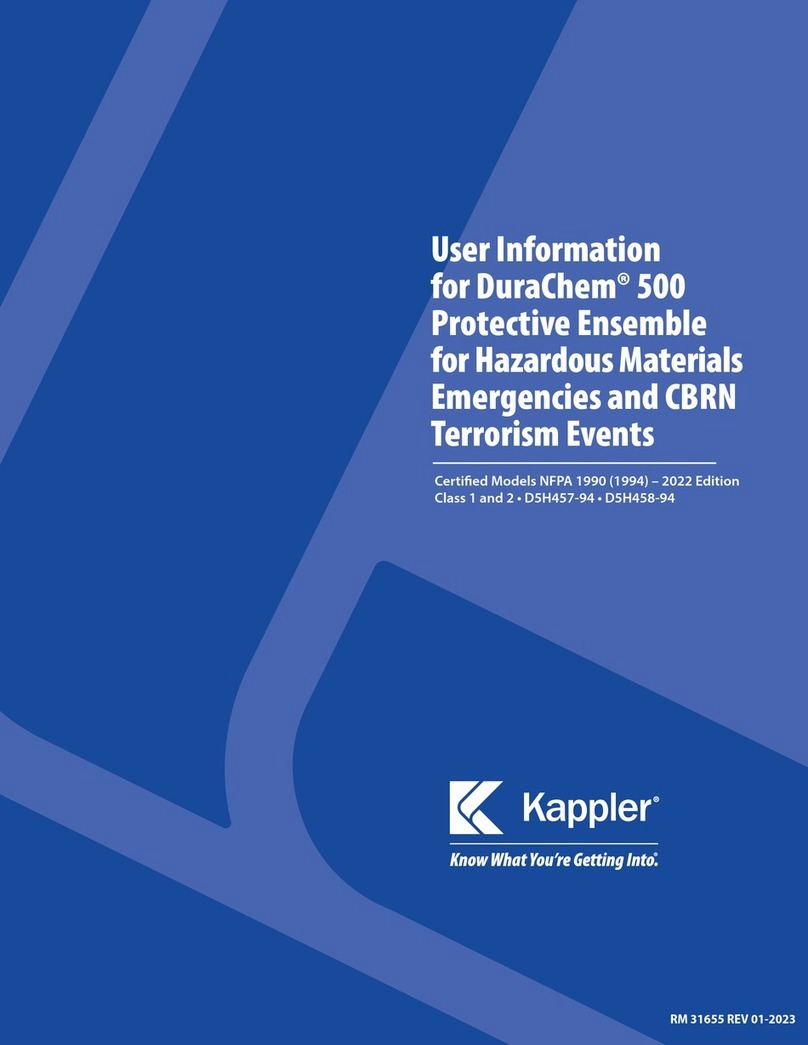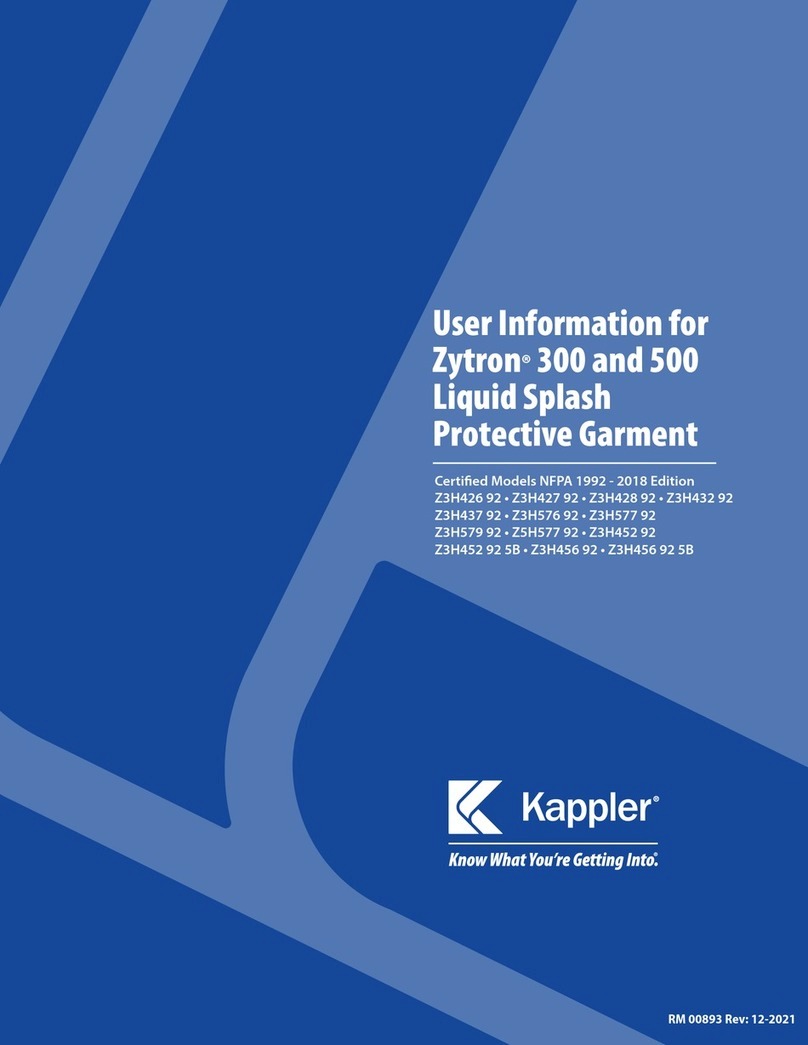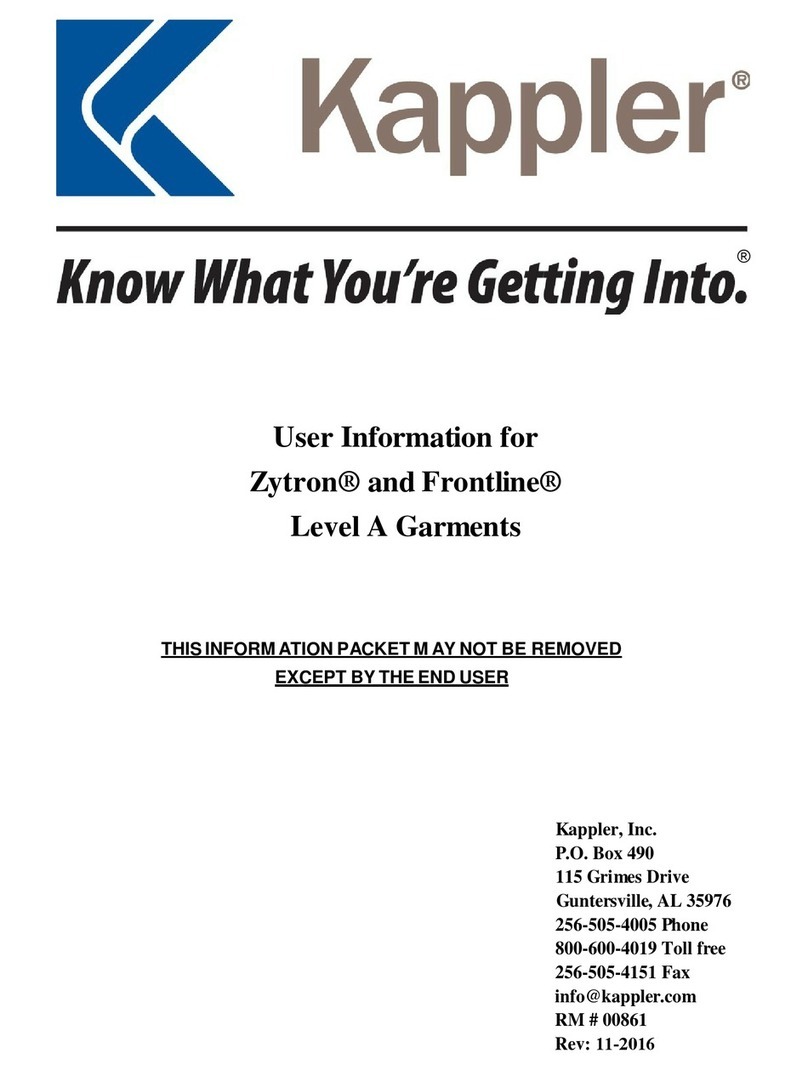
CONTENTS
Safety Considerations..............................................................................................................................1
Safety Symbols Used In This Manual...................................................................................................1
Warnings and Limitations ......................................................................................................................2
Additional Equipment ....................................................................................................................................... 3
Wearers Must Be Physically Fit ...................................................................................................................... 3
Always Use the Buddy System����������������������������������������������������������������������������������������������������������������������������� 4
Manage and Prevent Heat Stress������������������������������������������������������������������������������������������������������������������������ 4
Chemical Permeation Data ������������������������������������������������������������������������������������������������������������������������������������ 5
Static Electricity ���������������������������������������������������������������������������������������������������������������������������������������������������������� 5
Avoid Continuous Exposure���������������������������������������������������������������������������������������������������������������������������������� 6
Supplied Airline Applications ..........................................................................................................................6
Sock Booties ��������������������������������������������������������������������������������������������������������������������������������������������������������������� 6
Provide Hearing Protection ............................................................................................................................. 7
Communications���������������������������������������������������������������������������������������������������������������������������������������������������������7
Inspection of the Garment .....................................................................................................................7
Full Visual Inspection ..............................................................................................................................8
Pressure Testing the Garment ..............................................................................................................9
Conducting the Test ................................................................................................................................9
Returning the Garment ......................................................................................................................... 13
Instructions For Field Replaceable Compontents ......................................................................... 13
Storage Life and Service Life.............................................................................................................. 14
Storage Life.........................................................................................................................................................14
Storage Conditions .......................................................................................................................................... 15
Visor Anti-Fog Treatment ..................................................................................................................... 15
Closure Lubricants ................................................................................................................................. 15































